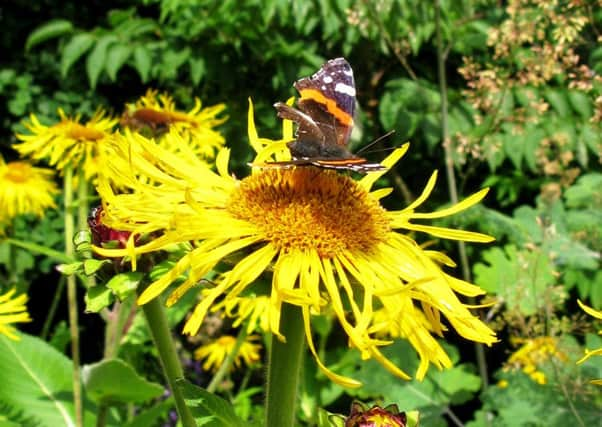Gardening: Butterfly effect


People love butterflies; it’s just that we tend to take them for granted and expect them to reappear as if by magic year after year.Sadly, they don’t, and the main reason is us – the very same people who love them so much. We destroy their habitats, we poison their air and we certainly don’t grow nearly enough of the plants butterflies need to survive and thrive.
So, it’s time we did something to rectify the matter – give butterflies the flowering shrubs whose nectar will attract these wonderful creatures to our gardens.
Advertisement
Hide AdAdvertisement
Hide AdMost people recognise buddleia – it’s often called the butterfly bush because in mid-summer its long, arching blooms are often covered with butterflies – and bees and numerous other insects eager to share in the feeding fest.
Buddleias take no growing – in fact, they can root and spread just about anywhere to become something of a plant pest. But kept under control they should be a delight in the garden.
But butterflies aren’t just attracted by buddleias, they like lavender, salvias, lilacs and thyme, all of which are simple to cultivate and have lovely scented flowers filled with much-appreciated nectar.
And smelly privet (Ligustrum) is also a butterfly magnet. The flowers may appear insignificant but they are many and pull in a huge number of insect varieties throughout the summer and into early autumn.
Advertisement
Hide AdAdvertisement
Hide AdDon’t forget ivy (Hedera helix), notably ‘Arborescens’, the tree ivy whose blooms may not be the most attractive in the garden but which are a valuable source of food for butterflies and many other insects seeking nourishment after the summer feast is over.
Cotoneaster and escallonia can also play their part producing nectar for many species, and pyracantha flowers offer an important source of food in early summer.
If all that isn’t enough to sate the appetite of even the most voracious of butterflies, good old heather – Calluna vulgaris – with its evergreen foliage and sprays of late-summer flowers, is another valuable source as autumn approaches and food stocks begin to run out.
Some butterflies are strictly one-species feeders and will look no further, but the more there is on offer, the more likelihood there is of attracting several varieties of these ever-popular insects.
So bring a bit more colour to your garden – and help wildlife while you’re doing it.